Perversion Story (1969)
Directed by: Lucio Fulci
Written by: José Luis Martínez Mollá, Lucio Fulci, Roberto Gianviti
Starring: Elsa Martinelli, Jean Sorel, John Ireland, Marisa Mell
AKA UNA SULL’ ALTRA, ONE ON TOP OF THE OTHER
ITALY
AVAILABLE ON REGION ‘A’ BLU-RAY AND DVD
RUNNING TIME: 108 mins/ 103 mins/ 97 mins
REVIEWED BY: Dr Lenera
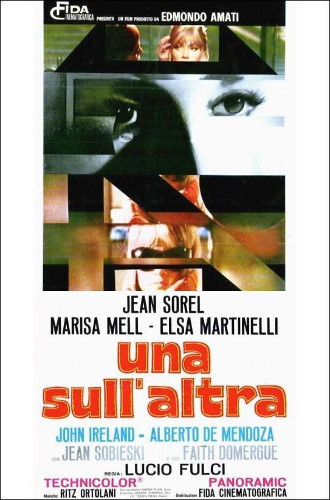
In San Francisco, George DuMurrier is a wealthy doctor who runs a clinic with his younger brother Henry. While away with his mistress Jane, Henry rings to tell him that his ailing wife Susan has died from an asthma attack. Susan’s sister Helen, who never liked George marrying her sister, is hostile as usual, but an insurance policy left by Susan is a nice bonus. Then a mysterious phone call sends George and Jane to ‘The Roaring Twenties’, a strip club where they see a stripper named Monica who bears an uncanny resemblance to Susan, though her eyes are of a different colour so it can’t be her surely?….
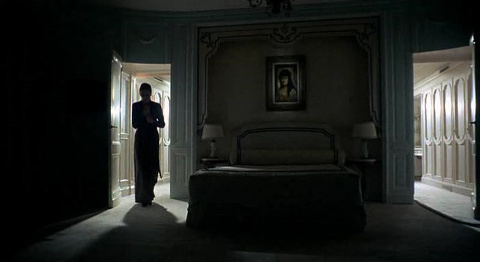
And so my Lucio Fulci review series continues with a film I was very much looking forward to seeing, his first giallo, his first film that wasn’t a comedy or a western, and the first of his movies to be released overseas. But calling it a giallo might be misleading because it doesn’t much play like one, but then the definition of what exactly is a giallo can vary. We’ve become used to the word being synonymous with crazily-plotted mysteries which contain elaborate murder set pieces, but in Italy the term defines a wider range of crime fiction, and the late ‘60s saw an interesting phase which I intend to explore more, of distinctly related endeavours which had little violence but retained twisty storytelling plus usually other common giallo ingredients like an distinct aura of sleaze. Perversion Story seems to be partly inspired by the previous year’s The Sweet Body Of Deborah which also starred Jean Sorel, in addition to Double Face which Fulci co-wrote, plus, perhaps surprisingly, Vertigo. Handled more as a drama with a mystery than a thriller, it’s quite lackadaisical in the way it handles its story despite the twists and turns, makes a few odd decisions, and sometimes seems to be more interested in reminding us that we’re in San Francisco what with its characters driving to wherever they need to go than its plot, and makes some odd decisions. It’s also very cold, which limits the emotional involvement of the viewer. But it’s very visually stylish, with cinematographer Alejandro Ulloa frequently shooting scenes and parts of scenes in unusual ways, is an even better showcase for the amazing creation that is Marisa Mell than Danger: Diabolik, and never bores despite its emphasis on dialogue over action, something that’s partly to do with a new revelation coming along every fifteen minutes. I didn’t have quite as good a time with it as I expected, but I still had a good time nonetheless.
Fulci and Roberto Gianviti took over a year to write the script, which was originally intended to take place in Louisiana, seeing as producer Edmonto Amati was keen to shoot much of the film in the United States which would hopefully fool American audiences into thinking that they were seeing a domestic production as well as raising its prestige in Europe. There was even intended to be a symbolic pre-title sequence that was to be shot in the state’s trademark wetlands, depicting a garden spider ensnaring a locust in its web and eating it, leaving only its shell. Then the setting was changed to New York, with ‘Variety’ magazine announcing that the filmmakers had got permission to shoot in the Statue of Liberty, before the script was heavily rewritten to take place in San Francisco as a cost-saving measure due to Amati wanting to have the film shot back-to-back with Carnal Circuit which he was also producing, and which was set in nearby Los Angeles. The climax may have been inspired by the case of Caryl Chessman, who was due to be executed in San Quentin Prison’s gas chamber, kept having his killing delayed but was then accidently killed anyway when somebody pressed the wrong button. Many of the prison staff reprised their roles, though the American trailer’s claim that the chamber had been “freshly used” wasn’t true. Fulci would constantly insult people on set jokingly and gave everyone nicknames; Sorell says that Fulci never told him what his was. Commercial success followed, even in the United States where it lost five minutes of sex and establishing shots. The French version lost eleven minutes that consisted of nearly all of the travelogue-style footage and lots of dialogue, though it unsurprisingly retained the sex scenes. Here in the UK, it only came out on video though was uncut. Most versions were called either Una sull’altra or its translation One On Top Of The Other, but Perversion Story was always Fulci’s intended title.
An aerial shot of the Golden Gate Bridge aurally backed up by a radio advertisement for San Francisco begins a sometimes rather jerky opening montage of helicopter footage of the city which was clearly deemed necessary, or maybe Fulci was just showing off. A quick zoom into the front door of a large building gives us more of an idea of which director we’re watching, though to be fair many used zooms a lot around this time; even Mario Bava went through a phase of it. We learn that Susan has had another asthma attack, but her husband George is in the clinic on the other side of the city which he own with his brother Henry, who’s not happy with the way that George has been getting publicity for the place, though his latest excess was to attract the interest of a sponsor. He doesn’t seem very concerned about his wife despite being had a go at by both her and her sister Helen, though remains around to welcome a nurse to look after her, her arrival shot in slightly jarring close-ups. But then he’s got a mistress to go off with every now and again. Their sex scene becomes rather beautiful when about half way through it’s shot through a red bed sheet. in what is both both beautiful and erotic in a semi-abstract way. She wants him to herself and ends it, but then we get what we actually think is some conventional romanticism as we follow George in his car trying to outrun the train that Jane is on while both the camera and the soundtrack music sore. George is waiting for Jane when she gets to her house and wins her back, but when we get the impression that this happens constantly in their relationship, the sentimentality is subverted. George is not a nasty guy, but there’s something cold and callous about him. Though perhaps unintentionally enhanced by the emotionless voice that dubs him on the English-language track, Sorel, as he sometimes can be, is very bland and doesn’t seem to be trying much, which leaves a bit of a hole at the centre of the proceedings.
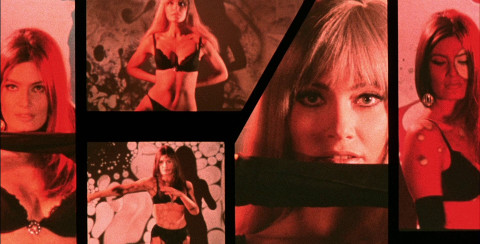
George gets some money out of Susan when she dies, and a man following him turns out to be a cop because it’s thought that he may have killed Susan; of course we see that he wasn’t present, but could he have orchestrated the crime somehow? The suggestion that George did it is soon dispensed with, which is a shame. He gets a mysterious phone call which tells him to look at an advertisement of a club and its star strip artist though we don’t see all of this; what’s really odd though is that I don’t believe that the identity of the caller is ever told to us. Carelessness or deliberate? Who knows? The lead act at this place, who never even has to show her tits even though the waitresses are topless and she herself is also a prostitute [albeit a high class one], is Monica, the double of Susan despite having different eyes. This is swinging late ‘60s San Francisco where we even have a few scenes with a Blow Up-like fashion photographer, so George and Susan get it on very quickly. He finds a bottle of one of the things that Susan was taking, a moment that has George framed in a mirror in one of the more amusing visual devices that this movie is packed with, though that in itself doesn’t mean anything. But then it transpires that Monica was hired by somebody to pose as Susan, and that Susan was poisoned. I managed to half-guess [the term will make sense if you’ve seen the movie] who was behind this, but what bothers me more is that it’s difficult to see how such a masquerade could be pulled off without George cottoning on, while somebody revealing all to George so that he can tell his lawyer is a really poor piece of plotting. The final act hinges on whether the truth will be uncovered in time for George not to go to his death via electric chair, and you’d expect the pace to really pick up here, but instead its leisurely with little feeling of urgency, though Fulci does seem interested in the details of the gas chamber.
The two sex scenes are quite explicit for the time in a non soft-porn film; you wouldn’t normally see, for example, the woman take the man’s hand off her breast and move it down to her vagina. We even start to get a lesbian scene before it’s rudely cut off because it’s really a plan to startle someone else into admitting something. But Fulci – who appears briefly as a police technician – and Ulloa still mange to give us something interesting to look at every five minutes in a film which tends to be hard and expansive outside and hazy and claustrophobic inside. Odd angles and deep focus shots abound. Smoothly shot footage is intercut with ‘shakycam’. There’s even some multiple split screen. When a medicine cabinet is opened, we get a view from inside the cabinet. Susan is introduced in the most elaborate manner; as the camera begins to pan to the right, she’s seen reflected in a mirror before she’s then seen walking by the same mirror, the camera then continuing to pan the same direction down a hallway to finally reveal and zoom in on Susan coming out of a door reflected in another mirror! During the lesbian bit, we seem to be looking up ‘through’ the floor as Jane mounts Monica, an angle that’s made even more irrational when the next shot shows that Monica is lying on a solid beige carpet! My favourite shot is when we see the reflection of Susan’s body being carried outside falling against George as he looks out of a window; it’s really haunting. While this was made before the double tragedy that forever changed Fulci, he seems to be already interested in death, with some dwelling on Susan’s corpse which we later see having rotted away, which must be the first such thing in the movie career of a director who later became famous for having lots of such things and alive too. And what about that hint of necrophilia when we have a brief cut to said corpse during a sex scene?
Mell does well in her dual role, though of course makes the most impact in her second, first seen making climbing of a motorbike look very sexy indeed, after which we get a nice scene which could have been longer where she sits at the same table as George and Jane, who both can’t stop staring at her while she lusts after both of them and thinks that they may want to pay for a threesome. The confident, liberated character is a type that would often turn up in gialli and is one of several things one can throw back at those who claim that this genre is sexist. This time the almost obligatory bottle of J & B whisky is photographed so that, despite being in the foreground, it appears between Mell’s legs looking very phallic. For some reason there are several Argentinian actors in this despite this not being a South American co-production, Riccardo Cucciolla fares exceptionally well as Benjamin Wormser, a client of Monica’s who’s become infatuated with her. Riz Ortolani’s music score is often in a traditional jazz idiom, which while a great listen doesn’t always go with what’s happening onscreen, though a lounge track works well as source music a few times and there seems to be deliberate irony in some of his scoring. The film itself contains a lot of irony and seeming offhandness in its story, such as its most pathetic character committing the most decisive action [the only bit of on screen violence] in it, or the way that the final event is handled, the last-minute saving of life occurring off screen, the information instead being told to us by a smarmy reporter – though maybe it’s kind of appropriate seeing as George has been controlled and passive throughout the whole story; us not seeing his final scene underlies how weak and unimportant he is. Perversion Story just misses being prime Fulci despite its amazing cinematography, and I do wonder if that shortened French cut may work slightly better with its tightening, but it still contains a lot of interest.
Rating: 












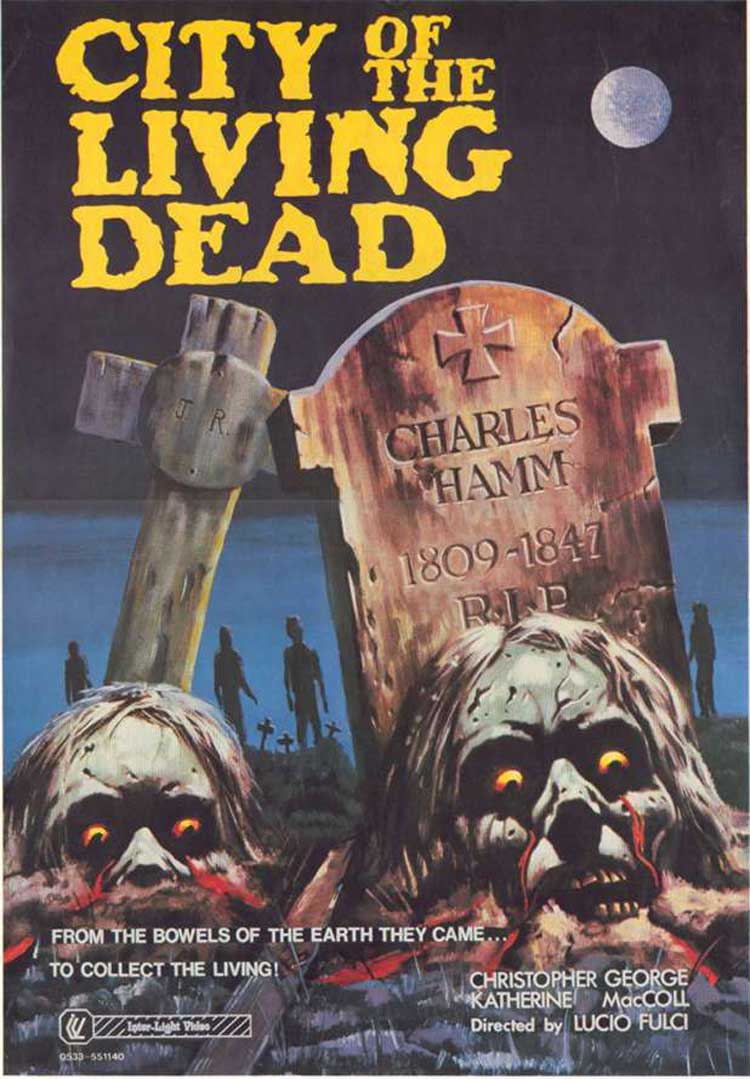
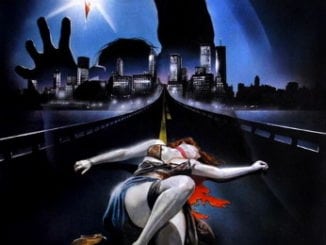
Be the first to comment